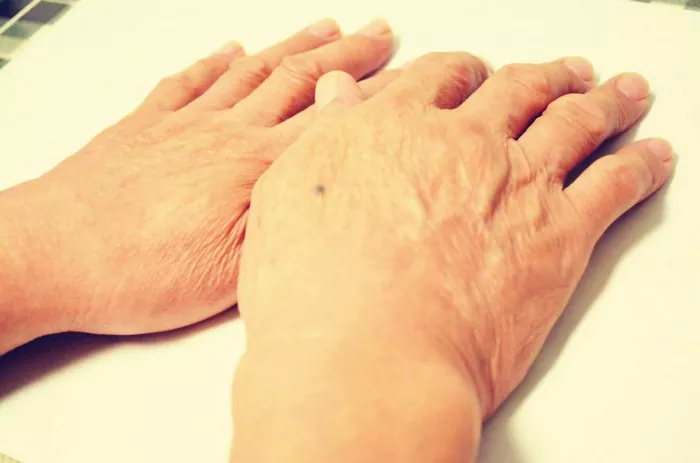Introduction to Wrinkled Fingertips
Wrinkled fingertips are a common occurrence that many individuals experience at some point in their lives. While often temporary and benign, wrinkled fingertips can sometimes be a sign of an underlying medical condition or result from certain lifestyle factors. Understanding the potential causes of wrinkled fingertips can help individuals identify the underlying issue and take appropriate action.
Normal Causes
One of the most common causes of wrinkled fingertips is prolonged exposure to water. When the skin is submerged in water for an extended period, such as during bathing, swimming, or doing dishes, it absorbs water and swells, causing the outer layer of skin to wrinkle. This wrinkling is a normal physiological response and typically resolves once the skin dries out.
Medical Conditions
In some cases, wrinkled fingertips may be indicative of an underlying medical condition. Some medical conditions known to cause wrinkled fingertips include:
Raynaud’s Disease: Raynaud’s disease is a condition characterized by episodes of reduced blood flow to the fingers and toes, typically triggered by cold temperatures or stress. In addition to color changes and numbness, individuals with Raynaud’s disease may experience wrinkling of the fingertips during episodes.
Scleroderma: Scleroderma is a rare autoimmune disorder that causes thickening and hardening of the skin and connective tissues. In addition to skin changes, individuals with scleroderma may develop wrinkled fingertips as a result of the condition’s effects on skin elasticity.
Thyroid Problems: Thyroid disorders, such as hypothyroidism or hyperthyroidism, can affect various aspects of skin health, including hydration and elasticity. Individuals with thyroid problems may experience dry, wrinkled skin, including on the fingertips.
Medications
Certain medications can also contribute to the development of wrinkled fingertips as a side effect. Medications known to cause skin changes include:
Diuretics: Diuretic medications, which are commonly used to treat conditions such as high blood pressure and edema, can cause dehydration and dry skin, leading to wrinkling of the fingertips.
Chemotherapy Drugs: Some chemotherapy drugs used to treat cancer can cause skin changes, including dryness and wrinkling. These side effects are often temporary and may improve once treatment is completed.
Prevention and Treatment
Preventing wrinkled fingertips involves taking steps to protect the skin and maintain its hydration and elasticity. Some tips for prevention and treatment include:
Avoid Prolonged Water Exposure: Limiting the amount of time spent with wet hands can help prevent wrinkled fingertips. Use gloves when doing dishes or household chores involving water, and pat the skin dry after washing.
Moisturize Regularly: Applying a moisturizing cream or lotion to the fingertips can help keep the skin hydrated and prevent dryness and wrinkling. Choose products containing ingredients such as hyaluronic acid or glycerin for optimal hydration.
Protect Against Environmental Factors: Protecting the skin from harsh environmental factors, such as cold weather and exposure to chemicals and irritants, can help maintain its health and prevent wrinkling.
Conclusion
In conclusion, wrinkled fingertips can result from various factors, including normal physiological responses to water exposure, underlying medical conditions, and certain medications. Understanding the potential causes of wrinkled fingertips and taking steps to prevent and treat them can help individuals maintain healthy, smooth skin. If wrinkled fingertips are accompanied by other symptoms or persist despite preventive measures, it’s essential to seek medical attention to rule out any underlying medical issues and ensure appropriate treatment. By staying informed and proactive, individuals can effectively manage wrinkled fingertips and maintain optimal skin health.
FAQs
What does it mean when your fingertips are wrinkled?
Wrinkled fingertips, similar to prune-like skin, often occur after prolonged exposure to water. This wrinkling is a temporary reaction caused by the tightening of the skin’s outermost layer, known as the stratum corneum, in response to water absorption.
Do fingertips get wrinkly as you age?
Yes, as you age, the skin on your fingertips, like other parts of your body, may develop wrinkles due to a decrease in collagen and elastin production, along with other natural aging processes. However, age-related fingertip wrinkling tends to be more permanent compared to the temporary wrinkling caused by water exposure.
How do you fix wrinkles on your fingers?
To improve the appearance of wrinkles on your fingers, consider using moisturizers containing ingredients like hyaluronic acid or retinol to hydrate and plump the skin. Additionally, protecting your hands from harsh chemicals and UV exposure can help prevent further wrinkling.
Can anxiety cause wrinkled fingertips?
Anxiety itself does not directly cause wrinkled fingertips. However, stress and anxiety can lead to behaviors such as nail-biting or skin-picking, which may contribute to skin damage and wrinkles over time. Additionally, stress can impact overall skin health, potentially exacerbating existing skin conditions that may affect the appearance of the fingertips. Managing stress through relaxation techniques and self-care practices may help mitigate these effects.

